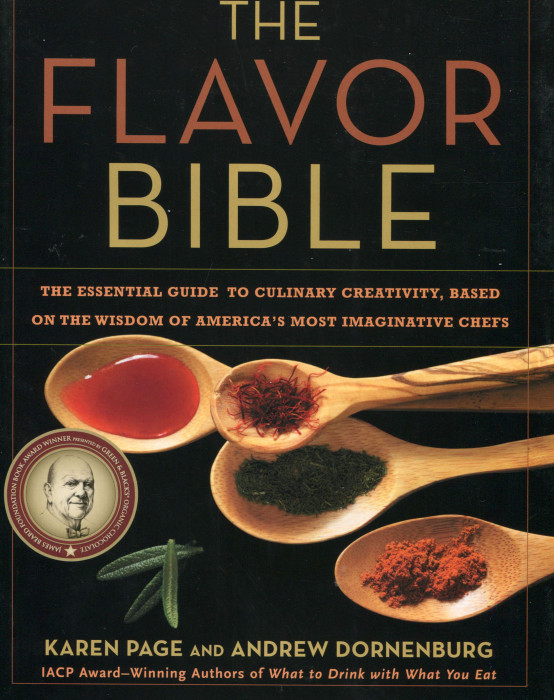I never thought about how “old” a book had to be to qualify for a Throwback Thursday. And this one is still “young” or nearly so. Published in 2008, The Flavor Bible by Karen Page and Andrew Dornenburg is a book you can use endlessly.
This is an encyclopedia of ingredients, ranging from achiote seeds to zucchini blossoms, with suggestions for ingredients that are a “natural” match for preparation in dish with this lead ingredient. Along the way there are comments on the seasonality of the ingredient, its primary taste, plus tips and techniques.
As an example, I was working this week on a cocktail using tequila and the mixologist had suggested paring it with a ginger-honey syrup. Sure enough, The Flavor Bible suggests ginger as a paring partner for tequila. [Yes, the Bible has entries for bourbon and gin and rum — this is a bartender’s quick guide to superior matchups!].
The encyclopedia portion of the book is 340 pages long: big, wide pages. With hundreds of entries and thousands of suggestions, this book will satisfy your curiosity or stir it. Let’s see, for example, what goes with, oh, avocado: arugula, bacon, basil, beans, bell peppers, chicken, crab, … The list is three columns long. And the entry for avocado suggests some recipe combinations like avocado + crème fraiche + grapefruit. That’s a selection that has not appeared on my table, but I am happy to try. After all, experts suggest it.
Oh, the experts who have picked these “natural” pairings. Who are they? Authors Karen and Andrew assembled a stellar panel of 30 culinary experts. The executive chef at Gramercy Tavern, the owner of Blue Hill, a pastry chef from Babbo, another pastry expert from Jean Georges, and one from Le Bernadin, the chef at The Herbfarm in Seattle, and the chef from the late, great Chanterelle in New York City. I haven’t mentioned their names because you probably would not recognize them. But their restaurant homes are at the heights of culinary stardom. These contributors made independent assessments of their ideal flavor combinations and the authors assembled the results into these many pages of recommendations.
How to use this book? The possibilities are endless. Perhaps the best way is to keep it close at hand and, just occasionally, pick it up when you have an ingredient you are about to us and you want some flavor intensification. That bottle of white pepper hovering over your teaspoon? What could you add to it? Ah, cloves or lemongrass or nutmeg. Sprinkle a few dashes of those complementary ingredients into your dish, and then taste the flavor elevation.
Encyclopedias are always intense but rarely actually fun. The Flavor Bible is packed with information, entertaining and educational to browse, and fascinating to cook with. It’s an extension for every cookbook you own and a volume you’ll find charmingly indispensable.

